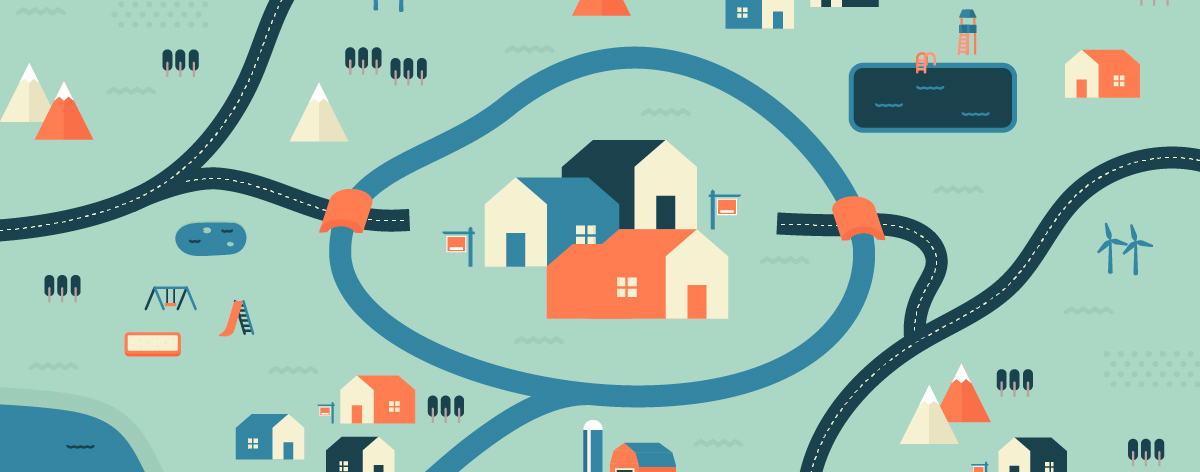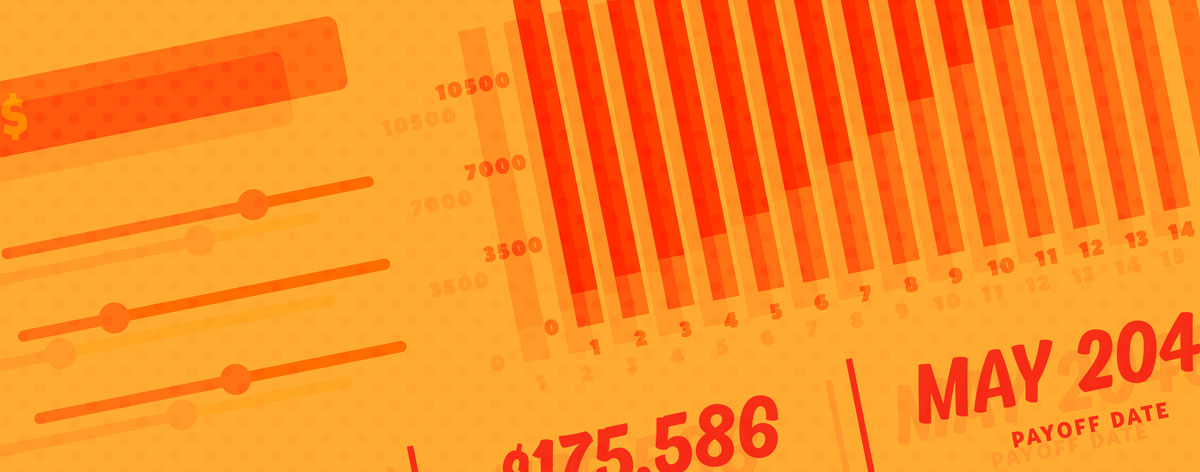

It’s a complicated word that actually has several meanings, but when it comes to loan amortization, the definition is fairly simple: it’s the process of spreading a loan into a fixed payment over time. In other words, amortization is what makes it possible for you to make a large purchase, like a home or car, with affordable payments that eventually lead to a zero balance.
The Basics of Amortization
When your loan is amortized, your regular payment actually consists of two parts (even though you only make a single payment): interest and principal. Interest is the cost of borrowing money, and is usually a percentage of the amount you borrow paid back to the lender. Principal is the actual amount of money you borrowed. Each payment funnels money to cover both interest and principal.
When you first take out a loan, a higher portion of the payment goes to interest and less to principal. This is because your loan balance is so high that the interest owed is higher than what you owe in principal. As you make payments that lower the loan balance, less interest accrues on the principal, so a larger portion of your payment goes toward principal. Eventually, you’ll pay off the loan entirely.
For instance, say you have an amortized loan payment of $1,000. In the early months of your loan—and maybe even early years—it could be that $700 of your payment goes to interest and $300 goes towards the principal. Over time, you’ll pay down the principal and less interest is owed. In the later months of your loan, even though your payment is still $1,000, you’d have $800 going towards principal and only $200 going towards interest.
Amortized loans have an amortization schedule that shows you how much of each payment goes to interest and principal, and how those ratios change over time. Or you can try an online amortization calculator to estimate payments and see how interest rates and other loan terms impact amortization.
Where Amortization is Used
Many financial products use amortized loans to make payments affordable for borrowers. This includes:
- Mortgages: A home mortgage is a common example of an amortized loan. Your monthly payment goes towards both the interest on the loan and a portion of principal. At the beginning of the mortgage, you pay more in interest and less in principal. This is not true for an interest-only or balloon-payment mortgage, which are non-amortizing loan types.
- Auto Loans: An auto loan is usually similar to a mortgage. Your amortized payment goes towards both interest and principal. You may hear the term “front-loaded” when discussing terms of a car loan—that simply means more of your payment will go toward interest than principal in the beginning of the loan, just like an amortized loan.
- Personal Loans: Many—but not all—personal loans are amortized. How can you know? If you have a fixed interest rate and fixed repayment terms, your loan is likely amortized. If you have questions, ask your lender.
- Student Loans: Student loans are generally amortized because they often have fixed interest rates and repayment terms.
What Loans Are Not Amortized?
Not all loans are amortized. Interest-only or balloon-payment mortgages are non-amortized loans. Revolving lines of credit, like credit cards and home equity lines of credit (HELOCs) are not amortized loans.
When you charge money on a credit card, you’re essentially taking a “loan.” But credit cards typically only require a minimum monthly payment that goes solely towards interest and may not reduce the principal balance of the card at all. The remaining balance carries over to the next month, and accrues more interest, which contributes to rapidly rising balances.
Is Amortization Worth It?
The truth of amortization is that you’ll pay a lot in interest. In the case of a 30-year home mortgage, you could end up paying double or more of the loan principal once you factor in interest. But, for many people, an amortized loan with a long repayment period is the only way to make a large purchase like a home affordable.
Ways to Maximize an Amortized Loan
If you want the predictability of an amortized loan, but don’t want to pay as much in interest, there are a few options:
- Make additional payments: Sending extra payments directly to the loan principal reduces the balance faster. The lower the loan balance, the less you’ll pay in interest. The key is to make sure that extra payments are applied directly to the principal —talk to your lender for details.
- Round up monthly payments: Try rounding up your monthly payment to the nearest hundred or thousand dollars. The extra paid should go directly to your principal, but confirm with your lender. See how added monthly payments impact your loan with this early payoff calculator.
- Refinance into a shorter term: If interest rates drop, you may benefit from refinancing your loan into a shorter term. Paying a mortgage off in 20 years instead of 30, for instance, makes a huge difference in interest paid overall. For example, with a $250,000, 30-year home loan with 20% down payment and 5% interest, you’d pay an estimated $186,511 in interest over the lifetime of a loan. With a 20-year term and all else the same, the interest drops to $116,778. That’s $70,000 in savings.
- Try bi-weekly payments: Instead of making one payment a month, try paying half the amount every other week. These bi-weekly payments mean you essentially make one extra payment a year. This works especially well if you get paid bi-weekly.
A note of caution: Make sure there aren’t prepayment penalties for paying your amortized loan off too early. If you have non-amortized loans, such as credit card debt, it’s likely more beneficial for you to focus on paying down those balances first instead.
Understanding how loan amortization works can help you make more informed borrowing decisions and empower you with the knowledge to make strategic financial moves.
Neither Banzai nor its sponsoring partners make any warranties or representations as to the accuracy, applicability, completeness, or suitability for any particular purpose of the information contained herein. Banzai and its sponsoring partners expressly disclaim any liability arising from the use or misuse of these materials and, by visiting this site, you agree to release Banzai and its sponsoring partners from any such liability. Do not rely upon the information provided in this content when making decisions regarding financial or legal matters without first consulting with a qualified, licensed professional.

